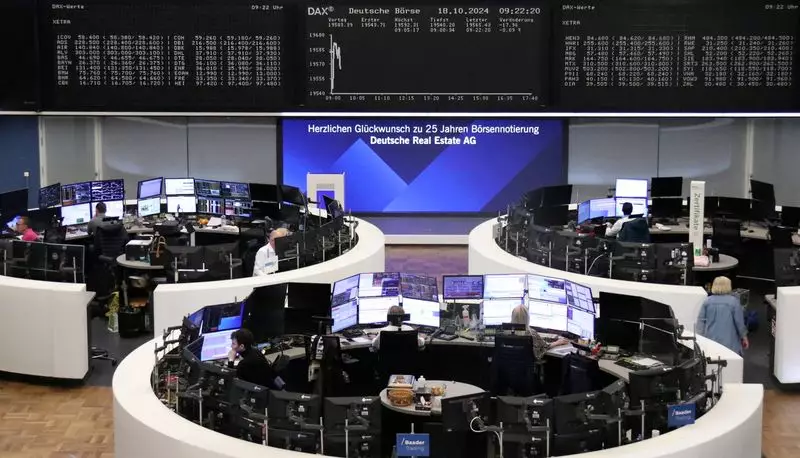Despite the tumultuous nature of the week, Europe’s STOXX 600 index demonstrated resilience by closing up 0.2% on Friday. This positive performance can be attributed to a robust recovery in tech stocks which jumped by 2%. Despite this slight uptick, the broader tech sector still faced a challenging week, ending with a 6% loss, following ASML’s troubling sales forecast for 2025 that triggered a sell-off in chip stocks globally. As investors navigate through this fluctuating landscape, it becomes evident that market sentiment remains on a fragile precipice, oscillating between optimism and caution.
Sector Performance and Corporate Earnings
The dynamics within the European market were further shaped by earnings reports from key corporations. Notably, several semiconductor stocks such as Soitec SA and BE Semiconductor Industries saw gains of 5.6% and 2.8%, respectively, despite the broader sector’s struggles. Basic resource stocks also received a much-needed boost, climbing 1.4% thanks to the favorable rise in copper prices. The luxury goods sector, after experiencing a significant sell-off earlier in the week, regained its footing. Brands like Gucci’s parent company Kering and Hermes saw respective increases of 3.5% and 1%, providing support to France’s CAC 40 index, which inched up by 0.4%.
While these numbers suggest a recovery in specific segments, it is crucial to bear in mind the contrasting views on overall growth forecasts. Goldman Sachs’ downgrade of the STOXX 600 index’s 2024 earnings growth to 2% from an earlier 6% highlights a growing concern surrounding the potential impact of rising corporate taxes and trade tariffs in the region.
The European Central Bank’s Strategic Maneuvering
The decision by the European Central Bank (ECB) to reduce interest rates to 3.25% came in response to these uncertainties. Sources indicate that a potential fourth rate cut could be on the table for December, provided that significant economic data does not indicate a downward trend. As the index faced record highs earlier in the year, the current stagnation raises questions about the sustainability of such rebounds, especially given the sluggish economic growth and lackluster demand from China.
Daniel Murray from EFGAM has articulated the stark differentiation between economic conditions in Europe and the United States, emphasizing the heightened risks that Europe faces. The vulnerabilities arising from slower trend growth make European markets particularly susceptible to external shocks, further complicating recovery prospects.
While the European markets displayed moments of recovery this week, the underlying challenges cannot be overlooked. The mixed signals from various sectors and caution from major financial institutions present a complex picture for investors. As they strive to identify opportunities amid uncertainty, the focus will likely remain on both economic indicators and corporate performance in the weeks to come.

